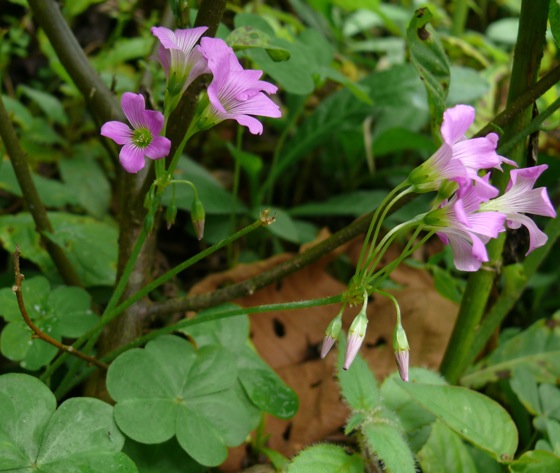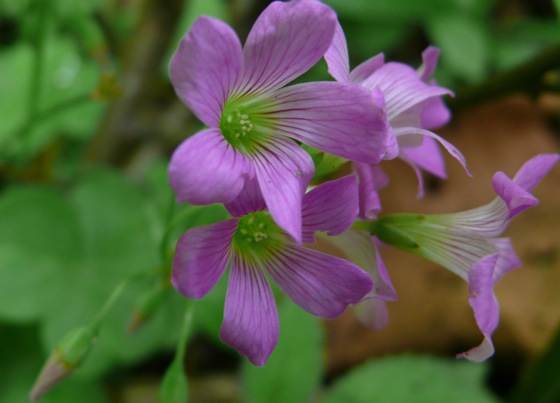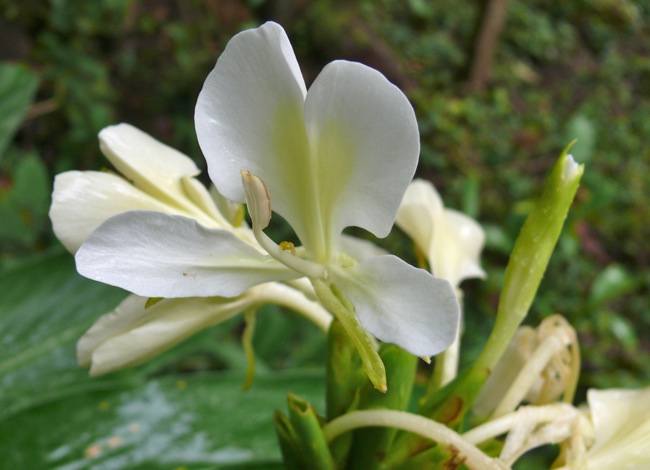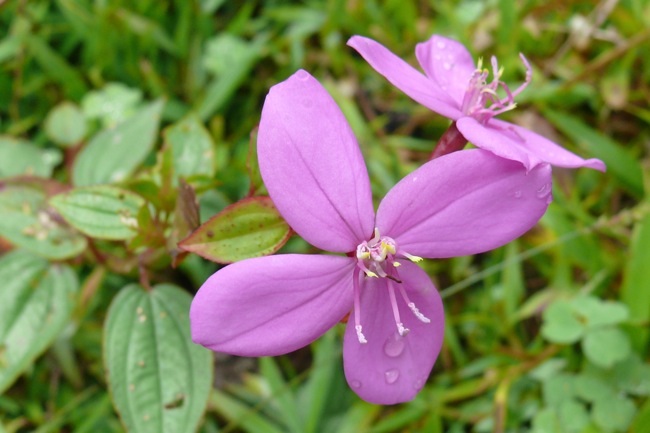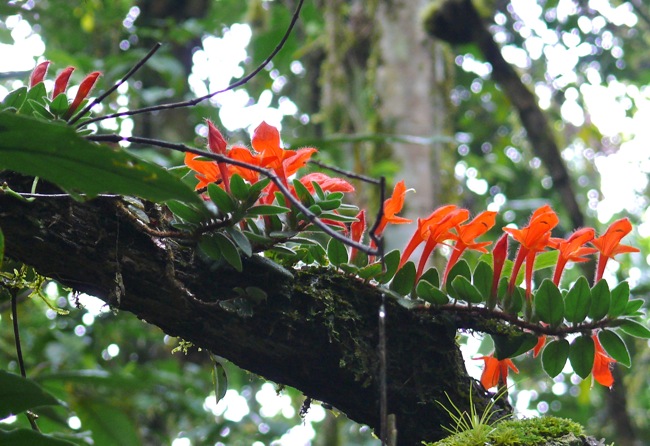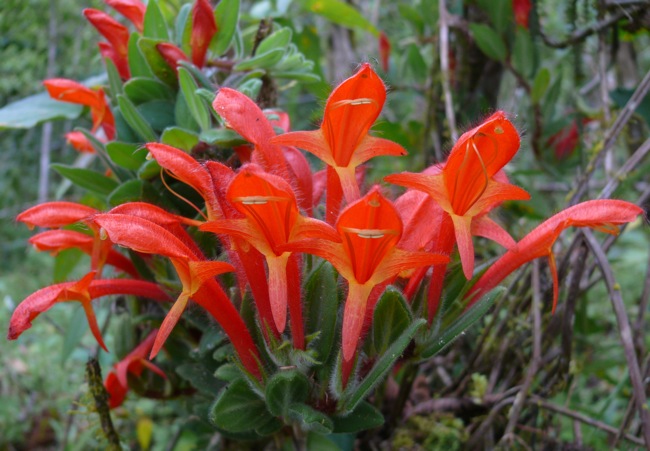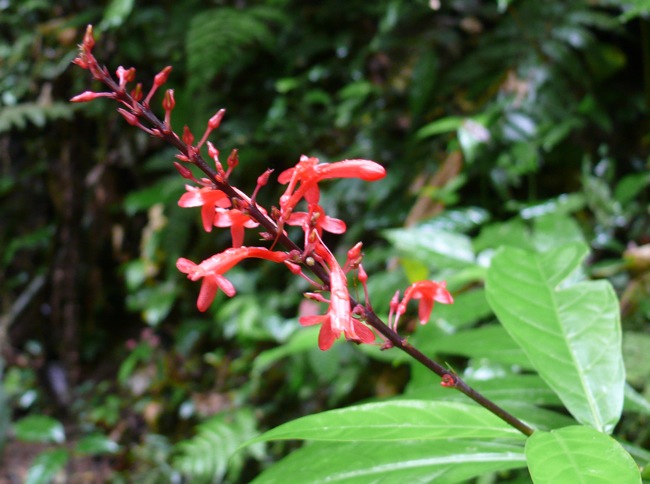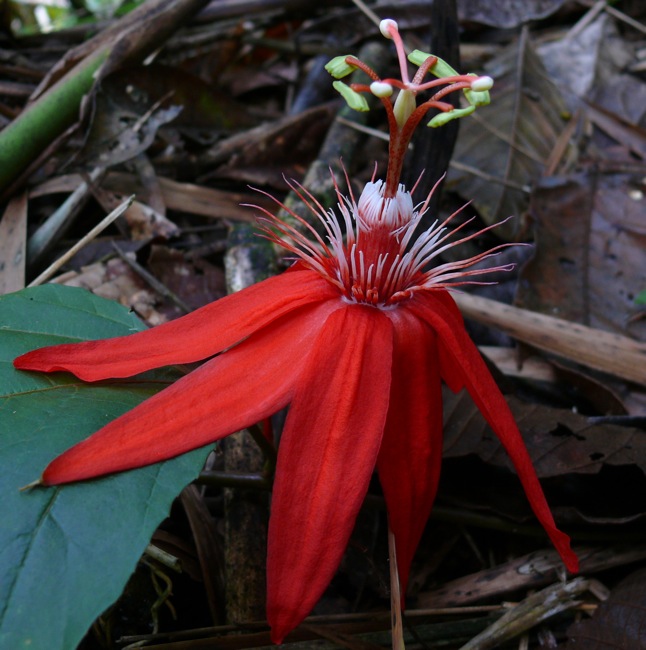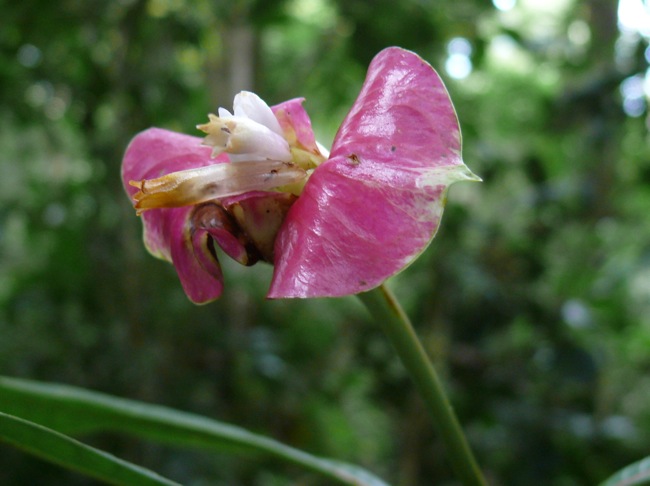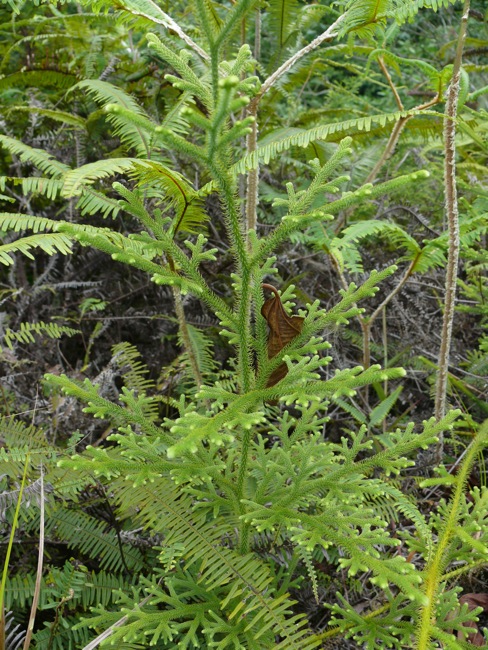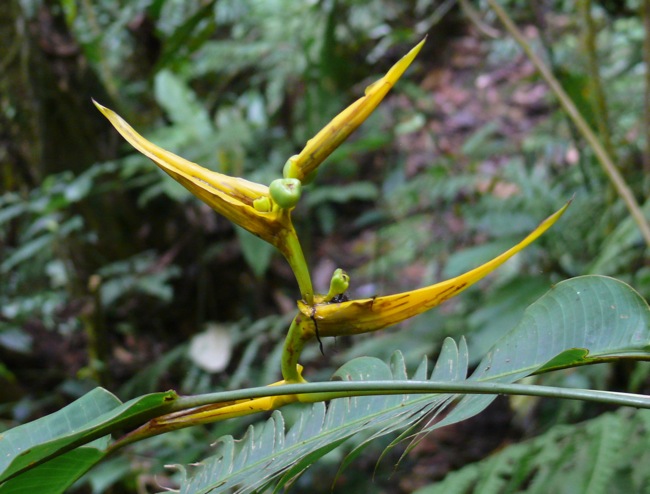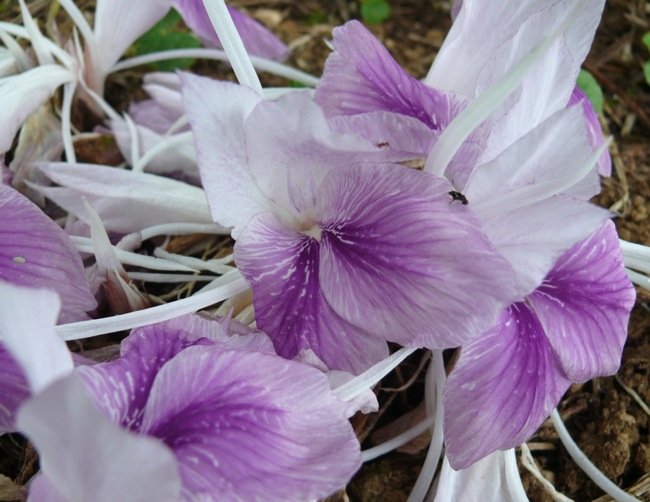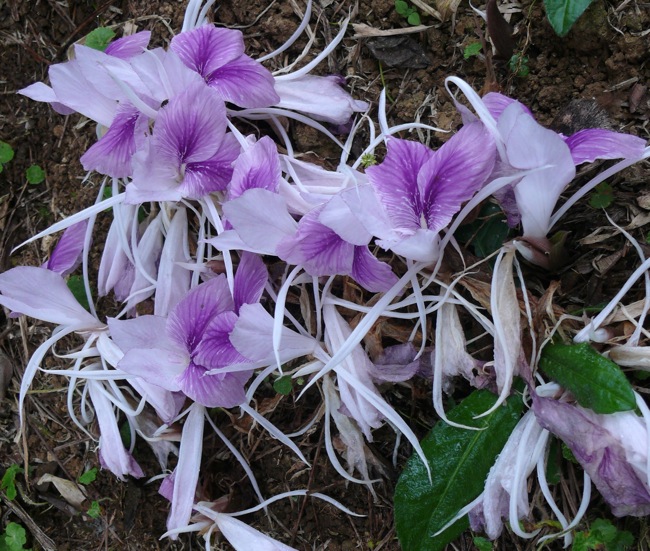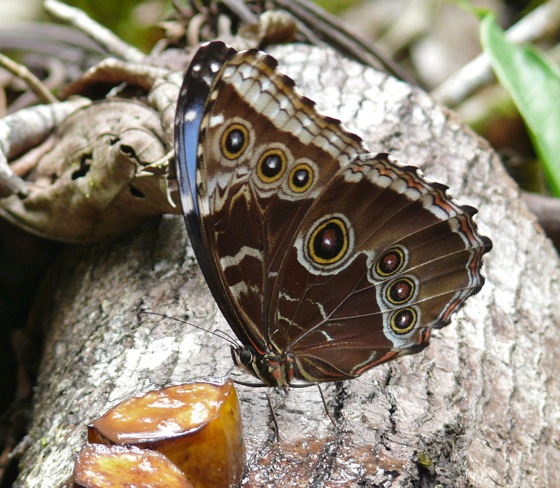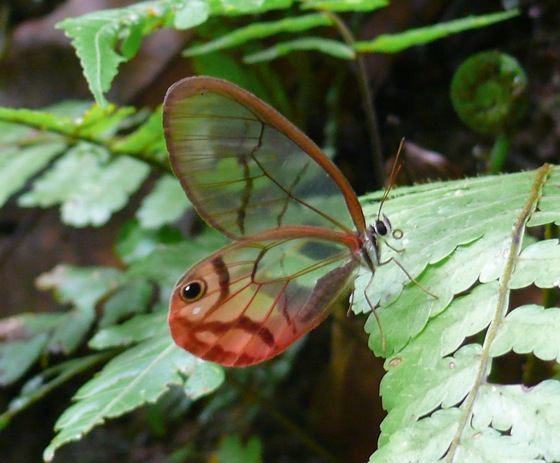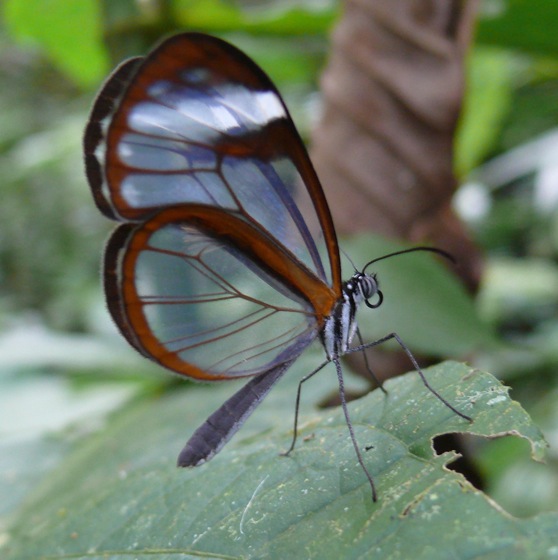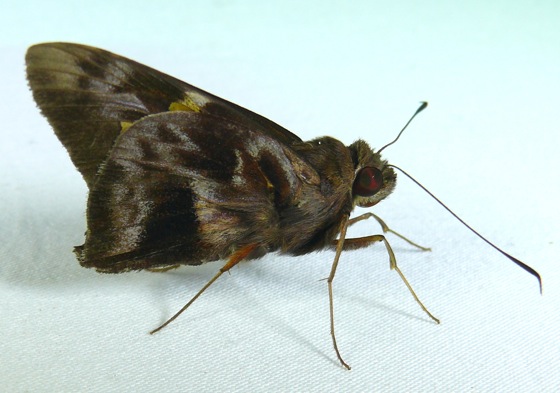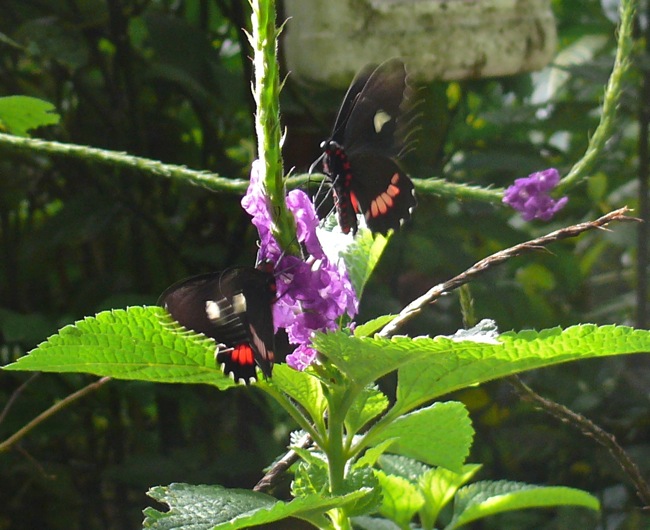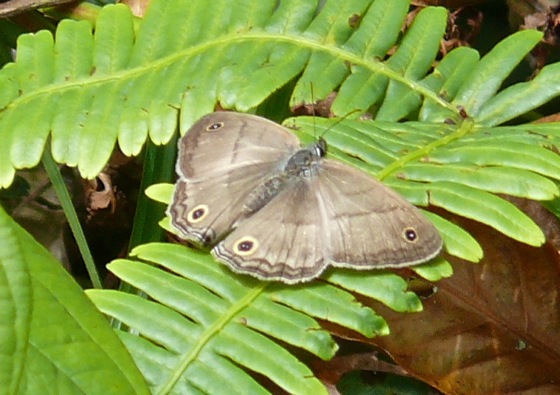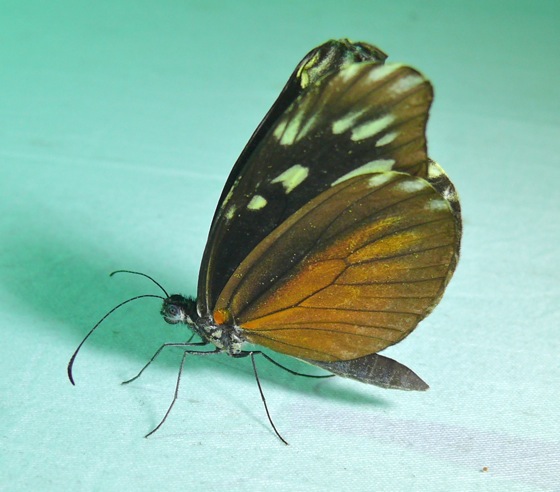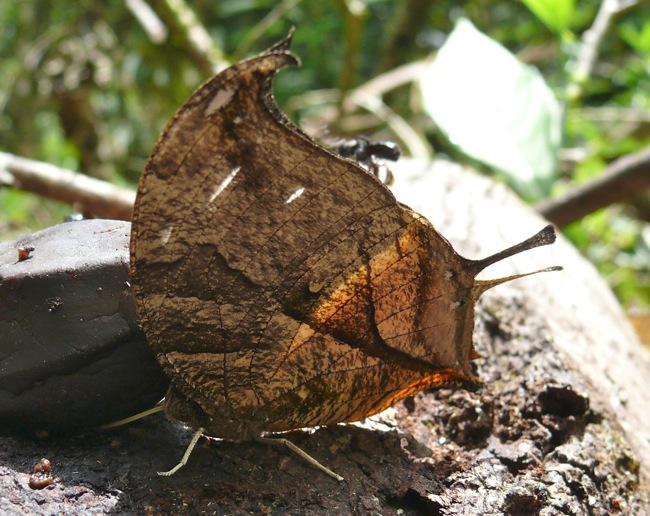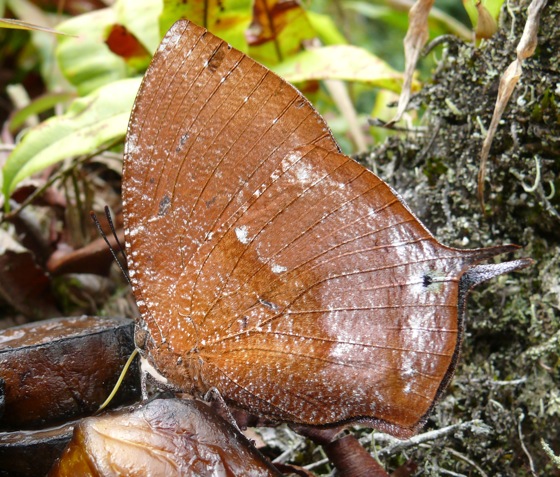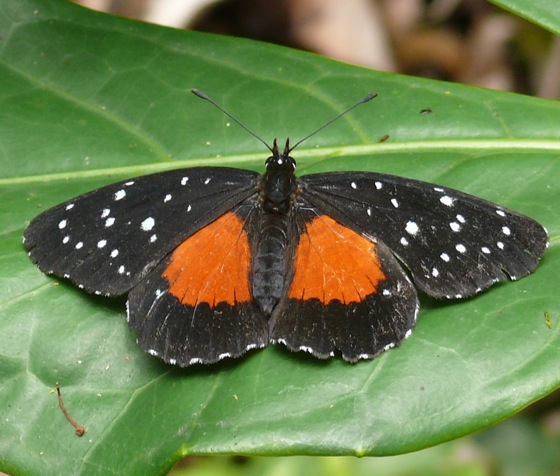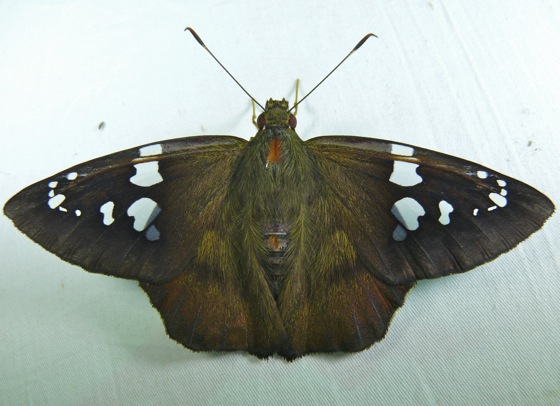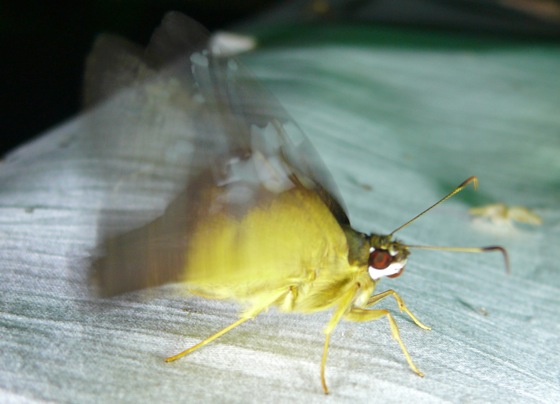Here are some of the flowers and butterflies we saw in Costa Rica. Since we spent most of our time in deep woods, there weren’t a lot of flowers, but the ones we saw were mostly large and brightly colored – I imagine so they can attract the attention of pollinators. These first few were at the edges of the woods, and in a cow pasture.
I think this one must be a species of Oxalis – it’s very similar to Violet Wood Sorrel (Oxalis violacea), a plant we have at home that grows in savannas and prairie edges.
Pinkfringe – Arthrostemma sp.
The rest of these are from deep in the woods. I’m sure these red ones attract hummingbirds.
Passionflower
I think this one is in the family Euphorbiaceae – the same family as poinsettias. The pink ‘petals’ are actually modified leaves, and the ‘real’ flowers are small and white, in the center of the pink leaves.
This isn’t a flower – it’s called Ground Pine (Lycopodium) and is related to ferns. The species we see in the northern U.S. only get about 8 inches tall, but this was several feet high.
This is a Heliconia – one of many species we saw.
I’ve been trying to find what kind of flower this is, but without success. Lisa (the owner of Rancho Naturalista) said that in Costa Rica they call it “Semana Santa” which means the holy week before Easter. That’s because it blooms around that time of year; and possibly because it blooms out of the ground with no leaves or stem. Later, after the flowers have finished, the leaves come up.
Now for the butterflies…
The two largest kinds of butterflies we saw were Morphos and Owl Butterflies. They both have wingspans of 7 or 8 inches.
This is a Common Morpho. The tops of the wings are bright, iridescent blue, but they only show when it flies. When it’s resting, it folds its wings, and hides the blue. These butterflies seem to like gliding through tall open places in the woods. They will also come to bait made of fermented fruit. Lisa mixed up some bait for me, and I put out piles of it along our favorite walking trails. This one is sipping juice from a fermenting banana at one of our bait stops.
These are Owl Butterflies – the other kind of large butterflies we saw. The front butterfly in this photo is a Yellow-fronted Owl-Butterfly (Caligo telamonius), the back one is a Yellow-bordered Owl-Butterfly (Caligo uranus) – I think. The tops of their wings are mainly brown, sometimes with some yellow or white patterns or stripes.
Yellow-fronted Owl-Butterfly
Yellow-bordered Owl-Butterfly
Another Owl-Butterfly. I don’t know what kind.
More butterflies – I’ve tried to figure out IDs, but the names are all guesses. If anyone knows more, please let me know.
White Satyr
Ur-Satyr
Satyr
This Pink-tipped Satyr is very common on woodland trails. It would rest on the trails, so it was completely invisible, and then start up suddenly and fly along in front of our feet.
Satyr
Radiant Brown-Skipper
Grinning Heliconian (terrible name for a beautiful butterfly)
Either a Heliconian or a Heliconian mimic. There are many butterflies that look like this, and they’re difficult to tell apart.
Glasswing Butterfly – with amazingly transparent wings.
Skipper
Cattlehearts – a kind of Swallowtail
Satyr
This one came to the moth lights at night.
Leafwing
Tricolored Leafwing
Tricolored Leafwing – looking at the closed wings
White-spotted Prepona
Leafwing – with closed wings
slightly more open wings
The same Leafwing, with wings open
Stripe-streak
Banded Peacock – a very common butterfly
Patch
A spreadwing skipper that came to the moth lights
The same spreadwing skipper

